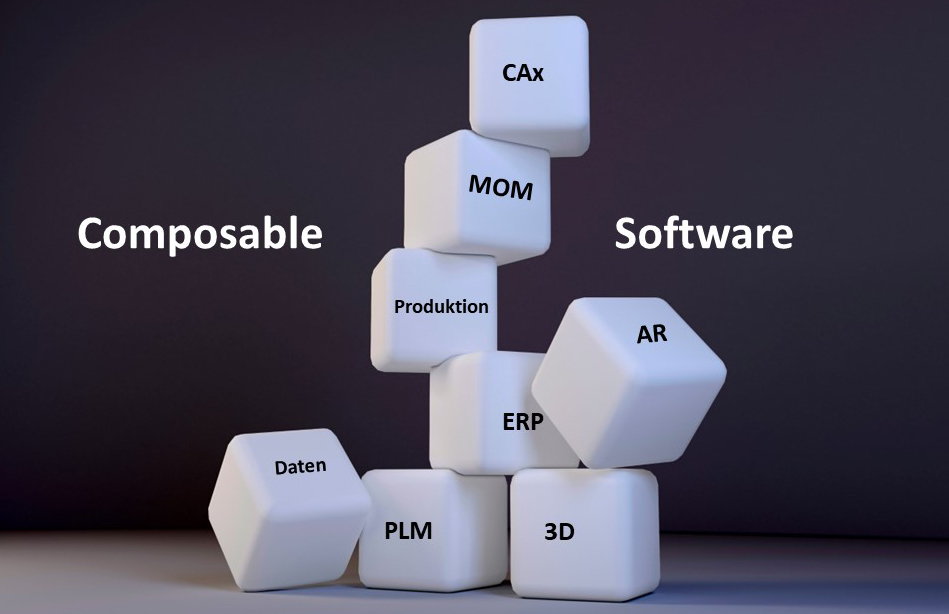Open standards, container software, apps and APIs, web services instead of software licenses – when it comes to industrial software, there is currently a spirit of optimism with numerous companies being founded, just as I experienced 30 or 40 years ago in the birth of CAD and CAM. The only difference is that this time it’s not about a new type of software or even about products. But about services based on web technology, paid for their use. This difference in technology and business model is so big that the upheaval is comparable only to a limited extent. The protagonists are also completely different. Among providers and users.
Just a few years ago, there seemed to be only one direction in industrial software: The remaining vendors in each application area bought in small ones to integrate their software functionality into their monoliths. Now, startups and other players are emerging that don’t want to sell software licenses or themselves. Instead, they offer Web services whose functionality is new and fills solution gaps. And these new services are on top compatible with older systems. – If those open up with APIs.
Back in the eighties and nineties, I wrote countless reports about what industrial companies were doing with the new software products. The engineers and designers knew best. A user could be trusted. I very rarely write such reports anymore. Everyone – at least those involved with industrial software – knows what is meant by CAD, MES, CRM, ERP, PDM, PLM and all the other acronyms and what can be done with the corresponding systems.
What is comparable to then is now: There is a lack of case studies, of reports from the practical use of the new web services. This is a lack because most people in the industry have become accustomed to conventional IT and cannot even imagine the new. So I may have a lot of work to do again in the next few years. As then, we need interpreters who understand what is coming to the market and what the industry needs it for. Reports that describe the benefits and value of the new.
Another aspect of the new departure is also comparable: The many players – in fact, there are more than back then – often don’t know each other. And the market doesn’t know them either. At least not compared to the familiar names of the marketable industrial IT. The platforms and portals needed for this networking do not yet exist, nor does a special trade media landscape like the one for CAD/CAM back then. Yet this networking is even more urgent than it was back then.
Background series on the news portal “Industrie-Digitalisierung“: Composable Software, here the introduction
After all, no single company can develop and build all the ingredients needed to offer a web-based service. Nor does it have to do it alone anymore. From hyperscalers and cloud platform providers to management software and complementary services and service providers, everyone has an entire ecosystem on which they rely and into which they embed their service as soon as they enter the market. Networking is a necessity today, without which the business model will not work at all.
In the industry itself, some things will also change. The new services finally offer the opportunity to break down the data silos that have grown up in departments. Since they are not based on installed software systems, but on web-based functionality, they enable entirely new forms and topics of interdepartmental collaboration. Now, the responsibilities in the organization chart that have grown with the old applications become a stumbling block. New structures are needed.
So there is a lot to do. An exciting time is opening up, in which not a few dreams that providers and users alike have had for a long time will come true. Now the technology is mature and the standards are available.
The U.S. analyst firm Gartner refers to this new development as “Composable IT. For example, in the area of production management, for which Manufacturing Execution Systems (MES) have been used to date, Gartner expects 60% of all new solutions to be “composable” as early as 2025.
I have just started a series of articles on my news portal “Industrie Digitalisierung” called “Composable Software”. Three vendors have already agreed to collaborate on it. I’m counting on a few more. And I’m also expecting requests for user reports. Just get in touch. I am available analog as well as digital and web-based.

